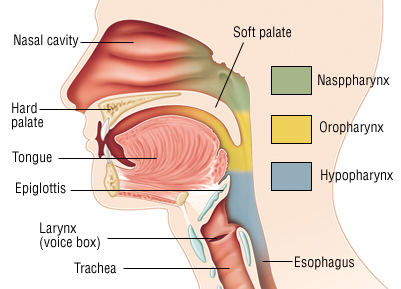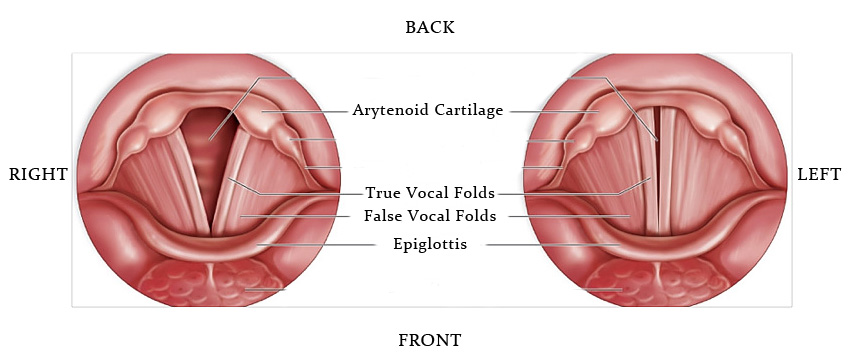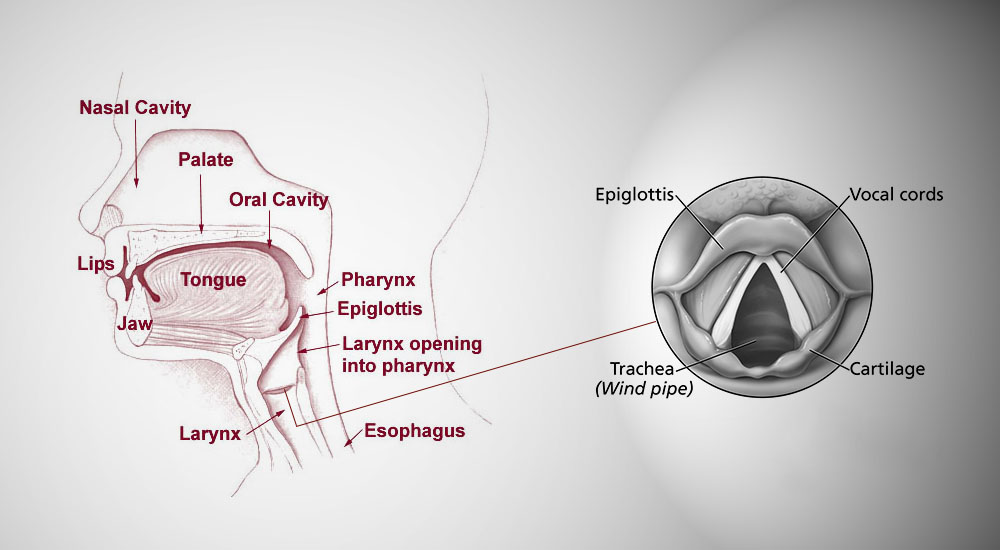Self Sabotage or Self Worth?
As artists we tend to overthink Ev-er-y- Thing!
So it’s a no brainer that when it comes to starting your vocal journey you can find yourself stuck and running in circles.
You think of reasons WHY you can’t do it instead of why you CAN!
Hello Self Sabotage!
You start you become your own worst enemy 😳
As artists we tend to overthink Ev-er-y- Thing!
So it’s a no brainer that when it comes to starting your vocal journey you can find yourself stuck and running in circles.
You think of reasons WHY you can’t do it instead of why you CAN!
Hello Self Sabotage!
You start you become your own worst enemy 😳
What can you do, to get past the inner mean girl/boy, and what are your mindset blocks?
The biggest thing holding you back!
Your thought process.
Did you know your mindset is so powerful!
It can set you up to flourish or fail..
Imagine if you could reconnect with your higher purpose, and realign with your goals again and actually accomplish an amazing music journey.
How would that feel like?
What could you accomplish in your singing?
Would you be writing more songs?
Performing?
Recording?
The first thing to address is your thought patterns, and what is actually holding you back?
Is it fear of rejection?
Are you scared of what people may think of you?
What are you telling yourself when you are singing?
Does your thought process sound something like this?
Gosh I hope I hit that note!
I sound terrible!
What if I can’t sing!
What if I sing a bad note!?
Wow I hope no-one can hear me!?
So instead of thinking of what could go wrong.
Start thinking of what could go right!
So let’s get real.
Being completely honest with yourself OF where you are in your vocal journey is where you probably need to start.
Is there something about your voice your unsure of?
Is there a break in your voice?
Are you lacking power and agility?
Understand what you need to do and start taking action now.
Action Steps for you!
Nurture yourself
Take time to enjoy singing.
Create a calming environment for you to feel safe and connected in the zone for your vocal training
It’s okay to make mistakes - Everyone does!
Start every morning with Gratitude 🙏
And end every night being fulfilled with what you accomplished that day
Stay in your lane
Don’t compare your vocal journey to anyone else, everyone starts somewhere.
If you start comparing your voice to someone else’s, you can find a shift in your ability to recognise your vocal talents.
You are good enough 🙌
Get rid of Self doubt
Kick those terrible thoughts to the kerb!
Imagine if you spoke to your friend the way you spoke to yourself. Pretty terrible huh?
Talk to yourself kindly and with love 💕
Journaling
Start a journal.
Write down what you think is holding you back and try to find a way to overcome your inner fears!
Meditation and Visualisations 🙏
Visualise yourself connecting to your songs
Achieving your vocal goals.
What does it feel like?
What do you achieve?
Embrace your uniqueness ✌️
Every time you have a negative thought try to focus on a positive. What can you work on in your voice to achieve the voice you want?
Schedule ⏰
Are you unorganised?
Get organised
Are you planing your vocal training sessions?
Do you set time aside work on your vocal development?
Vocal technique
Make sure you are using the right vocal technique for your voice, so you can accomplish amazing things .
There is nothing worse then working on the wrong technique, it just wont get you anywhere but frustrate city 🌃
Be patient and remember your vocal journey is truely unique.
It is yours, and yours alone.
You Got This ✌️
Stacey Jane ✌️💕🎤
The Voice Coach
www.staceyjanevocals.com
Have you downloaded my E-Book 'The Singers Guide to the Universe yet?
Its totally free for the moment!!
If not here's the link below:
How to maintain a healthy voice for singers
How to maintain a healthy voice for singers
Not sure how to keep your voice in tip top shape?
Here are some really good tips for you!
Keep hydrated
Why? Keeping hydrated is not only healthy for your whole body but also your voice (your body is your instrument). If you become dehydrated your body is unable to reduce muscus… Ewww. This results in a build up of phlegm that forms in the back of your throat, your nose and can cause coughing, which is a way of your body trying to get rid of this build up. The excess mucus can also cause issues for your respiratory system which in return causes havoc on your breathing and singing.
So Drink up!!!
Sleep zzzzzz
Sleep is an important ingredient in keeping your voice healthy. Try to get at least 7 to 8 hours a night and hopefully you will wake up happy and bright 🙌
Correct Vocal Exercises
Have your ever heard the term practice makes perfect? Well this is not really true.. Why? Well If you practice the wrong vocal exercises for your voice this can actually can make your voice worse?
So how do you know if you are singing correctly and applying the right vocal exercises for your voice?
Have an experienced voice coach, someone who is trained in teaching singing to access your voice correctly. They should have experience as a voice teacher, take a look at their track record of singers, who they have worked with. Can they also teach and sing well enough to demonstrate what they ask of their students?
So don’t just pick a singer who teaches singing. You should find a proper voice teacher with the knowledge and experience in teaching ALL voices types.
Why, because most singers are only going to be able to teach you what has worked for their voice, not yours.. Get my drift!?
Voice rest
So your voice box AKA- The Larynx (where your vocal folds are- where the voice is produced) doesn’t actually ever get to completely rest… This is because the larynx is apart of the body which not only helps us talk and sing, but also keeps us alive! What!! HOW you ask!?
The larynx is a tough, ring like muscular tube, that is a flexible segment of the respiratory tract connecting the pharynx (back of your throat) to the trachea (your wind pipe) in your neck.
It plays a vital role in the respiratory tract by allowing the air to pass through it while keeping food and drink from blocking the airway.
So back to voice rest.. STOP singing all day, no screaming or yelling, no whispering.
Try to maintain a healthy vocal exercise routine.
Some of my students who train with me have a daily schedule, this is usually depends on where they are in their voice development: these are some examples below.
A Beginner Vocalist
Practice; Once every two days- vocal exercises for 10 minutes a day. Then voice rest for the remainder of the day/ evening.
A professional vocalist
Practice; Everyday 30 to 45 minutes of vocal exercises; if working on tour or are in the recording studio; Own repertoire for 1 to 2 hours a day.Then voice rest for the rest of the day/ evening.
And this all depends on where you are in your vocal journey.
Remember NO two voices are the same.
Happy Singing
Stacey Jane The Voice Coach ✌️
Want to know more about your voice?
Jaw Tension and Singing
Jaw Tension and Singing
Jaw Tension and Singing
There is nothing worse than tension in your jaw…
And there is nothing worse then singing WITH tension in your jaw 😔
Do you find it uncomfortable to open our mouth to sing?
Some of my students actually don’t know they have tension in the jaw/ mouth until I point it out to them…
So how do you know if you have tension in the jaw?
Try this..
Place two of your fingers either side of your face just under the check bones where your jaw drops..
Is it sore if you press in around the area? Do you notice if the muscles are tight?
It usually means there is some tension in your jaw…
If there is tension in the jaw, there could also be some tension in your voice too - It all correlates.
When the jaw is tense this tension is transferred to the tongue muscles, the hyoid bone, your resonators and to the larynx (your voice box) which affects the quality of your singing.
The resonators are what ‘shapes’ your voice and depicts what comes out of your mouth, they consist of the pharynx (throat) mouth cavity, tongue, teeth, hard palate, soft palate and nasal passages. If the resonators are tense this affects your voice.
The resonators, lips, soft palate, hard palate, tongue, teeth, pharynx, nasal passages.
“The mandible is part of a composite structure that includes the tongue, the hyoid bone, and the larynx.
What a singer does with the jaw directly affects the other members of this compound mechanism and determines the shape of the resonator system.
The resonator tube (the vocal tract) extends from the larynx to the lips, and alters its position in reaction to postures of the jaw and tongue.” Miller. R.
But what can you do to help relieve some of the tension in your jaw?
A helpful exercise that I find can relieve some of the tension in my jaw and in some of my students is this little massage.. I call it finding the sweet spot… Mmmm
To find this, place your thumbs either side of your face closer to your ears and slide them across just under your cheek bone. Massage this area for at least 60 seconds, both sides.. Mmm feels nice Right!?
Another form of jaw tension also could be the result of TMJ- Owch!
Umm.. Whats TMJ your asking?
The temporomandibular
(tem-puh-roe-man-DIB-u-lur) acts like a sliding hinge, connecting your jawbone to your skull.
You have one joint on each side of your jaw. TMJ disorders are a type of disorder that can cause pain in your jaw joint and in the muscles that control jaw movement.
Your pain may be due to a combination of factors, such as genetics, arthritis or jaw injury.
Some people who have jaw pain also tend to clench or grind their teeth (bruxism).
Some of the symptoms of TMJ are
Pain or tenderness in your jaw
Aching facial pain
Difficulty chewing or pain while chewing
Pain in one or both of the temporomandibular joints
Aching pain in and around your ear
Locking of the joint, making it difficult to open or close your mouth.
TMJ disorders can also cause a clicking sound or grating sensation when you open your mouth or chew.
When to see a specialist?
If you have persistent pain and your unable to open your jaw properly or close please seek medical advise. Either a Dr or dentist can help with treatment of TMJ.
Happy Singing
Stacey Jane The Voice Coach ✌️
LOVE your voice 💕✌️🎤
Learn to 💕 LOVE your voice by taking care of your instrument ⠀⠀⠀⠀⠀⠀⠀⠀⠀
Some Healthy habits for taking the best care are: Keeping Hydrated 💧 (6 to 8 glasses a day is recommended) Limit alcohol or caffeine, which can cause the body to lose water and make the vocal folds and larynx dry. Alcohol can also irritate the mucous membranes that line the throat ⠀⠀⠀⠀⠀⠀⠀⠀⠀
Don't abuse or misuse your voice!
No yelling or screaming, and try to avoid talking over loud music or in loud environments. If your throat feels dry or tired, limit voice use or stop talking. ⠀⠀⠀⠀⠀⠀⠀⠀⠀ ⠀⠀⠀⠀⠀⠀⠀⠀⠀ ⠀⠀⠀⠀⠀⠀⠀⠀⠀ ⠀⠀⠀⠀⠀⠀⠀⠀⠀
Part 2 -Adolescent Voice
Part 2 - Adolescent Voice
The Adolescent Voice ~ Part 2
Frequency Change: Speaking Pitch
The voice of males at puberty often begins with a husky quality and an unsteady pitch, oscillating one or two tones. Although the pitch fluctuates day to day the trend is generally downward.
Voice change is one of the signs of female puberty. Voice change appears to begin before menarcheal onset and to continue through it. There is increased breathiness in the voice quality compared to the relative clarity of prepubertal voice quality. The breathiness is due in part to incomplete vocal fold adduction. (the vocal folds coming together)
During voicing, the membranous portion of the vocal folds adduct, but the cartilaginous portion does not achieve complete closure, forming a posterior glottal opening that is called mutational or glottal chink. Mutational chick is thought to result from insufficient contraction of the interarytenoid muscles. Poor speaking or singing habits may also influence the speaking pitch.
Frequency/pitch distinction between male and female begins during puberty and continues throughout adolescence. The voice changes are a result of growth of the phonatory, resonatory, and respiratory anatomy; roughly parallel the appearance and development of the secondary sex characteristics.
The pitch and quality changes that occur at puberty are more apparent in males then females due to the greater magnitude of the pitch change, which is approximately one octave in males.
The female voice change can be characterised by:
1. Lowering of mean speaking fundamental frequency by about three to four semitones.
2. Increased breathiness, huskiness, and hoarseness.
3. Voice cracking during speech.
4. Noticeable registers “breaks” during singing.
5. Decreased and inconsistent pitch range capabilities.
6. Singing that requires more effort and delay in phonation onset.
7. Breathy, “heavier,” “rougher” voice qualities.
The male adolescent voice change can be characterised by:
1. Sudden voice breaks
2. Huskiness or hoarseness to the voice quality and increased perturbations.
3. Uneven voice changes.
4. Timbral effects of the changing voice as it descends in pitch causes males in sing in new vocal registers.
5. Conversion aphonia and persistent falsetto (puberphonia) due to lack of vocal fold adduction and a reaction to psychologically events such as emotional stress.
6. Tessitura and register development occurs, speaking voice lowers and becomes stable in lower register.
7. The voice change occurs concurrently with other pubertal developments.
8. Different voices mature at different rates
The Adolescent Voice
The Adolescent
There are physiological and structural differences that occur in the voice during prepubescent and puberty. Understanding how and why these changes happen are useful in understanding the difficulties encountered by the young male and female vocalists.
The Adolescent ~PART 1
There are physiological and structural differences that occur in the voice during prepubescent and puberty. Understanding how and why these changes happen are useful in understanding the difficulties encountered by the young male and female vocalists.
Puberty and adolescence:
Until puberty, the larynx is of equal size in both male and females. At puberty the male laryngeal growth outdistances the female in the anteroposterior dimensions.
On the on set of puberty and during the period from 10 to 14 years, there is a dramatic period of general growth associated with the increased secretion of androgens in the male and oestrogens in the female. As the hormonal changes take place, male and female secondary sexual characteristics emerge.
The dimensions of the vocal tract reflect this period of growth and differences between males and females. Laryngeal dimensions in the male are generally larger and the thyroid cartilage changes its configuration. In Prepubescent the angel of the thyroid cartilage is 120 degrees in both female and males. During pubertal change in the male, the thyroid cartilage enlarges significantly and the angel decreases to 90 degrees, giving rise to the marked thyroid prominence known as the Adam’s apple. Increase in length of the thyroid cartilage is nearly three times greater in males than in females.
The vertical descent of the larynx during life. The illustration demonstrates the relationship of the lower border of the cricoid cartilage to the cervical vertebrae at various stages.
At birth, the lower border of the cricoid cartilage is level between cervical vertebrae 3 and 4 (C3 and C4). By age 5, the laynx has descended almost to the level of C7. Between ages 15 to 20, it remains at C7.
Vocal Folds
Before puberty, the vocal folds of boys and girls are the same size. While male’s vocal cords grow dramatically, female’s vocal cords only increase slightly.
The increased size of the laryngeal skeleton is reflected in the length of the vocal folds. In girls, the mean length of the vocal folds is 15 mm before puberty and this may increase to 17 mm in a contralto.
During the mutation period, a boys vocal folds double in length and may increase to a maximum of 23 mm in the bass voice. The minimum vocal fold length for the male is 17 mm, it can be seen that a tenor and a contralto may have much the same pitch range, but it is the larger resonators of the larynx, pharynx and the chest that distinguish the male from the female voice.
Hormones have been linked to voice changes in adolescents and adults. In puberphonia, the male adolenscent voice has a higher pitch than is typical of other males of the same age. This voice disorder is related to emotional stress, which results from psychosocial changes that occur during puberty. Conversion aphonia and persistent falsetto (puberphonia) are two functional voice disorders. In conversion or functional aphonia, there may be lack of vocal fold adduction during attempted phonation.
Above are the laryngeal changes at puberty and the transverse section of the larynx.
Dimensions of the larynx
The membranes and the cartilagionous portions of the vocal folds are equal in length in infancy creating a proportionately larger glottis. By adulthood the membranes portion with greater pliability has elongated to approximately two thirds of the total glottal length. Glottal width and infraglottal dimensions increase with age.
Ingo Titze, points out that examination of laryngeal differences;
With regard to gender reveals; the vocal fold length is significantly greater in the pubertal male then in the pubertal female. The vocal folds of the adult male are approximately thirty percent lager then those of the adult female."
The Human Voice
The human voice
The human voice is one of the most flexible and smallest instruments in the world.
In the human body, structure determines function. That is the shape and form of a structure determine the manner in which the structure will operate. Thus it is important to understand the anatomy of a structure to understand how it works.
The human voice is one of the most flexible and smallest instruments in the world.
In the human body, structure determines function. That is the shape and form of a structure determine the manner in which the structure will operate. Thus it is important to understand the anatomy of a structure to understand how it works.
The larynx has several important functions. Primarily, it is a respiratory organ controlling the flow of air into and out of the lower respiratory tract. The larynx protects the lower airway from access by anything but air and also has a role in deglutition. The role of the larynx is the primary sound generator.
Unlike songbirds, humans do not possess an organ such as a syrinx, and it is the lack of this special organ that makes technical training in singing a necessity.
The cartilages of the larynx
The arytenoid's find their points of attachment to the cartilages. Since they are located within the interior of the larynx, they are therefore intrinsic. The cricothyroid are attached the outer surface of the thyroid cartilage and they are therefore extrinsic. The intrinsic muscles of the larynx are associated with the respiration; the extrinsic muscles are connected, both neurologically and muscularly, to the process of swallowing. In phonation the two systems must reverse their natural roles and function in a coordinate relationship.
The human vocal mechanism freely functions when there is a great foundation of vocal technique.
Good singing starts from the way in which the instrument is positioned. Whether the singer is tall or short, thin or thick, male or female, structural alignment must pertain. The external frame function of the musculature of head and neck, the position of the rib cage, the relationship of the muscles of the torso to the rib cage and the sternum, and the balance of body dynamic muscle equilibrium are some principles that pertain for all singers.
Similar to the trumpet, which needs the buzzing lips to serve as the oscillator for sound production, the human voice has vocal folds to serve this function.
The larynx, which is commonly, called the voice box, houses the vocal folds and is the primary organ involved in the voice production. It is encased by the ‘Adams apple’ (also called the thyroid cartilage) and sits above the trachea (the windpipe) and in front of the oesophagus in the neck.
What is mix voice?
GOT MIX...
In order for any stringed instrument to function efficiently two elements must be present: one, the vibration of the string creating the pitch, and two, the resonance of the instrument creating tone. Like a piano, violin, guitar, harp, cello, viola, etc, the voice is a stringed instrument and depends on these two functions for proper vocalization.
When the vocal folds come together, the vibration between them creates a pitch depending on the length, thickness, and tension of the vocal folds. This pitch resonates throughout the body, creating the tone of that pitch.
Both of these elements were given equal importance in the original and pure bel canto technique. However, in the late 19th century there was a split within the bel canto world. One group continued on as “bel canto,” focusing more on the resonant portion of the technique and the movement of the resonance behind the soft palate. The other group focused more on the vibration portion of the technique, calling itself “forward singing.” The bel canto group is considered by many today as the style of “classical” singing, and the forward singing has developed into what is more commonly known as “belt” or “broadway belt” singing.
In Mix, we desire to bring the two elements fully back together. “Behind the soft palate” accesses the “head voice” and the “forward singing” brings the vocal folds fully together and accesses the “chest voice.”
By mixing the chest and head voice you receive the full benefits of “both voices”: the natural and powerful sound of the chest voice, and the beauty and range of the head voice. As a singer learns to sing using both of these resonances and trains the vocal folds to stay together, it is possible to vocalize smoothly and evenly from one register to the next.
The relationship of the two elements working together will create an even, smooth vocalization and, as a result, eliminates the “breaks” in the voice. The “break” is the passagio (passage) that occurs in most singers while attempting to vocalize from one register to the next. The “break” is a common complaint among vocalists. Mix, a balanced and healthy approach to singing, eliminates the “break” in the voice.
Depending on how these two resonances are “mixed,” a variety of sounds can be created and all styles of music can be accommodated. A sound that is natural and unaffected throughout the entire vocal range can be used in all styles of singing.

























